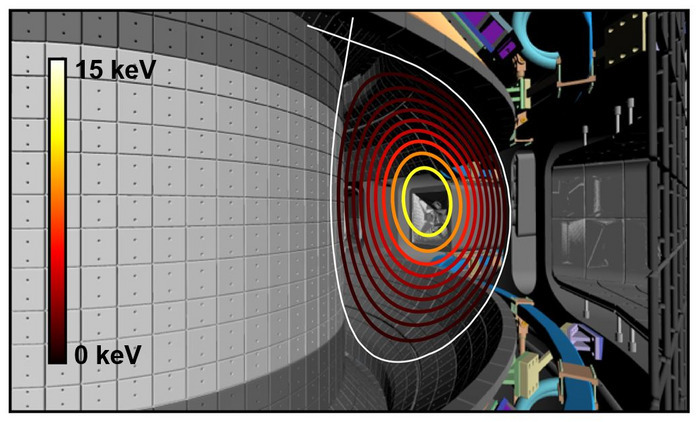GOVERNMENT
Korean Artificial Sun discovers new high-temperature plasma operating mode for fusion energy
 'FIRE mode' expected to resolve operational difficulties of commercial fusion reactors in the future
'FIRE mode' expected to resolve operational difficulties of commercial fusion reactors in the future
Korea Institute of Fusion Energy (KFE) and the Seoul National University (SNU) research team announced that they have discovered a new plasma operating mode that can improve plasma performance for fusion energy based on an analysis of plasma operations with ultra-high temperatures over 100 million degrees (Celsius) at the Korea Superconducting Tokamak Advanced Research (KSTAR).
To generate energy through a fusion reaction as occurs in the sun, it is essential to confine super hot and dense plasma in a fusion reactor stably and for long. To secure such a technology, worldwide fusion energy researchers have worked to find the most efficient plasma operating mode through theoretical and experimental studies.
One of the most widely known operating modes is H-mode (High confinement mode). It has been considered the primary plasma operating method for fusion reactors, thereby serving as a benchmark for developing next-generation operating modes.
The main downside of this H-mode, however, is the appearance of plasma instability, the so-called edge-localized mode (ELM) in which the pressure at the edge plasma exceeds the threshold, bursting the plasma like a balloon. Since this can cause damage to the inner walls of a reactor, researchers have been exploring various ways to control the ELM, while trying to develop a more stable plasma operating mode.
By analyzing experimental data of KSTAR operations and analyzing them through simulations, KFE and SNU researchers found that the fast ions, or the high-energy particles generated due to external heating, stabilize the turbulences inside the plasma, resulting in a dramatical increase in the plasma temperature. This newfound plasma regime has been coined “Fast Ion Regulated Enhancement (FIRE) mode“.
Since FIRE mode can improve the plasma performance compared to the H-mode while generating no ELM and providing easier operational control, it expects to open up new possibilities in developing plasma operation technology for commercial fusion reactors down the road, as well as contribute to the operation of the International Thermonuclear Experimental Reactor (ITER).
